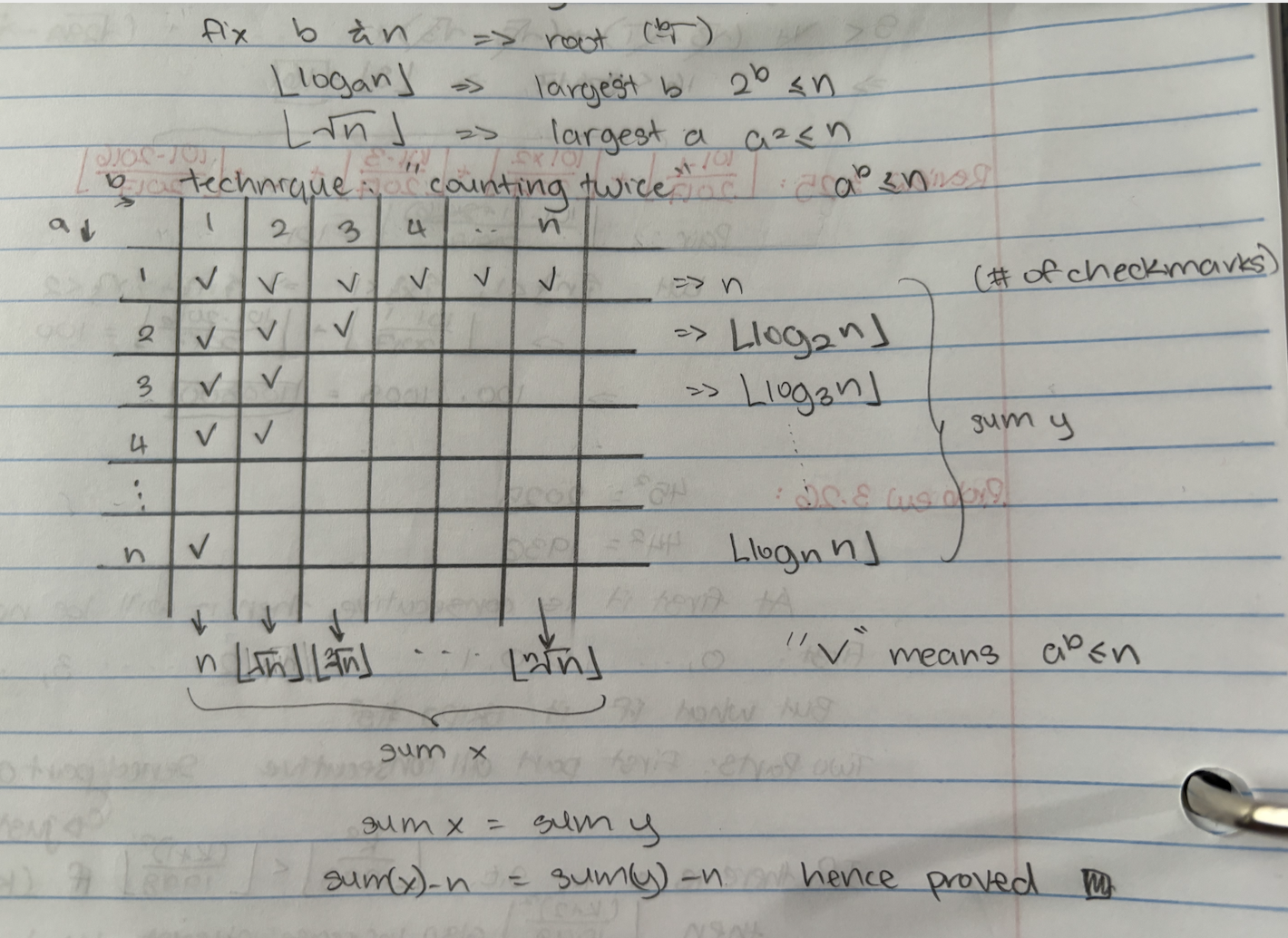Online Course Discussion Forum
MCIII Number Theory 3.27
Hello,
Hello! I was presented the solution by the table, as shown here:

However, I don't really get it. Assume all the checkmarks can be written as (b, a), where b is the column it is in and the a is the row it is in.
If a checkmark, say (4, 2), is part of sum x, it means floor(sqrt(n))≥4.
Why are the sums equal? The total number of checkmarks is equal, but not the values I think.
Thanks,
Tina Jin
It might be easiest to start with a specific example (or multiple examples) and then try to understand the general case.
Let's make an 8x8 grid and ask when is $a^b \leq 8$. The results are shown below:
Note the row sums (how many Ts in each row) are on the right and the column sums (how many Ts in each column) are on the bottom. Clearly the sum of the row sums (17) and the sum of the column sums (17) are equal because both count the total number of Ts in the grid.
Now try to understand what the row and column sums mean. Two examples:
- For how many values of $b$ is $2^b \leq 8$? Answer: $3$ (which is the second row sum).
- For how many values of $a$ is $a^3 \leq 8$? Answer: $2$ (which is the third column sum).
Hope this helps!
Social networks